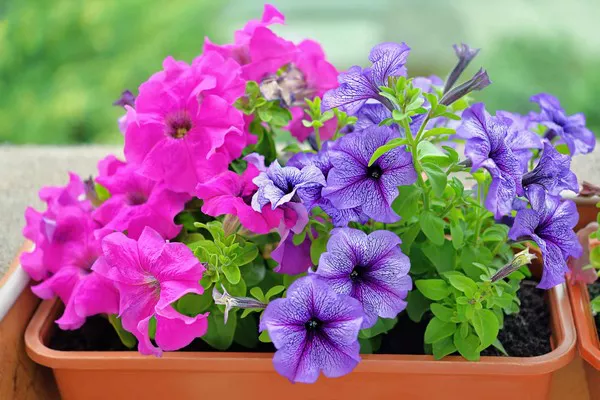Creating a vibrant and lush garden in shaded areas can be a rewarding endeavor, and selecting the right perennial flowers is essential to achieving this goal. While many flowering plants prefer bright sunlight, there are several varieties that not only tolerate shade but thrive in it. In this article, we will delve into the world of perennial flowers that flourish in shade gardens, discussing their characteristics, cultivation tips, and the design of shade gardens.
Understanding Shade Gardens and Their Challenges
Shade gardens are characterized by limited exposure to direct sunlight, either due to the presence of trees, tall buildings, or other structures that cast shadows. While designing a shade garden, it’s important to consider the varying degrees of shade, ranging from light to deep shade. Light shade areas receive filtered sunlight for a portion of the day, while deep shade areas rarely experience direct sunlight. One of the challenges of shade gardening is selecting plants that can adapt to lower light conditions and thrive despite the lack of abundant sunlight.
Selecting the Right Perennial Flowers
Choosing the right perennial flowers for a shade garden requires careful consideration of the plant’s light requirements, soil preferences, and overall aesthetic appeal. Here are some perennial flowers that are known to perform well in shade gardens:
1. Hostas (Hosta spp.)
Hostas are renowned for their striking foliage and adaptability to shade. Available in a wide range of leaf sizes, shapes, and colors, hostas can add texture and visual interest to a shaded area. They prefer moist, well-draining soil and thrive in partial to full shade.
2. Astilbes (Astilbe spp.)
Astilbes are valued for their feathery plumes of flowers that rise above their fern-like foliage. These plants thrive in moist, humus-rich soil and can tolerate varying degrees of shade, though they tend to perform best in light shade conditions.
3. Bleeding Hearts (Dicentra spp.)
Bleeding hearts are known for their unique heart-shaped flowers that dangle from arching stems. They thrive in light to moderate shade and prefer consistently moist soil. Bleeding hearts typically go dormant in the summer, so it’s essential to pair them with other shade-loving plants that will fill the void.
4. Ferns (Various Genera)
Ferns are a staple in shade gardens due to their elegant and often intricate fronds. These ancient plants come in various sizes and shapes and thrive in consistently moist soil and high humidity. They are well-suited for deep shade areas where other flowering plants struggle to grow.
5. Foamflowers (Tiarella spp.)
Foamflowers are valued for their delicate, foam-like flower spikes that bloom in shades of pink and white. They are well-suited for woodland gardens and thrive in partial to full shade conditions. Foamflowers prefer well-draining soil that retains moisture.
Cultivation Tips for Shade-Adapted Perennials
Successfully growing perennial flowers in shade gardens requires attention to specific cultivation practices to ensure optimal health and vitality. Here are some essential tips to consider:
1. Soil Preparation
Prepare the soil by incorporating organic matter such as compost or well-rotted manure. This helps improve soil structure, drainage, and nutrient availability for shade-loving plants.
2. Mulching
Apply a layer of mulch around the base of plants to help retain soil moisture, suppress weeds, and regulate soil temperature. Organic mulches like shredded leaves or bark are excellent choices for shade gardens.
3. Watering
While shade gardens generally receive less sunlight, it’s important to note that the soil in these areas can still dry out. Regular, deep watering is crucial to maintain consistent moisture levels, especially during dry spells.
4. Fertilization
Use a balanced, slow-release fertilizer to provide essential nutrients to your shade-loving perennials. Avoid excessive fertilization, as it can lead to leggy growth and reduced flowering.
5. Proper Plant Spacing
Ensure adequate spacing between plants to allow for proper air circulation. This helps prevent the development of fungal diseases, which can be more prevalent in shade gardens due to reduced sunlight.
Designing a Shade Garden with Perennial Flowers
Designing a shade garden requires careful planning to create a harmonious and visually appealing space. Here are some design considerations to keep in mind:
1. Color Palette
Select a color palette that complements the natural surroundings and creates a serene atmosphere. Cool shades of blue, purple, and white can add a sense of tranquility to shade gardens.
2. Layering and Height Variation
Incorporate plants of varying heights to create a layered effect. Taller plants can serve as backdrops, while shorter plants can fill in the foreground. This adds depth and dimension to the garden.
3. Texture and Foliage
Utilize different foliage textures to add visual interest. Mix plants with bold, large leaves with those that have fine, delicate foliage. This contrast adds depth and complexity to the garden’s appearance.
4. Pathways and Hardscaping
Integrate pathways, stepping stones, and other hardscape elements to guide visitors through the garden. These features can create a sense of structure and enhance the overall design.
5. Seasonal Interest
Choose perennial flowers that bloom at different times throughout the growing season. This ensures that the garden remains visually appealing and dynamic year-round.
Conclusion
Creating a thriving shade garden with perennial flowers is an art that requires a blend of horticultural knowledge and creative design. By selecting the right shade-adapted perennials and implementing proper cultivation practices, gardeners can transform dimly lit areas into captivating, lush oases of beauty. Whether you’re cultivating hostas for their striking foliage or astilbes for their elegant plumes, a well-designed shade garden can be a source of joy and inspiration for years to come.


